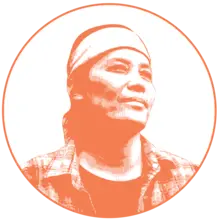This story excerpt was translated from French. To read the original story in full, visit ECHOS 237 OFFICIEL. You may also view the original story on the Rainforest Journalism Fund website here. Our website is available in English, Spanish, bahasa Indonesia, French, and Portuguese.
The sacred forests of Central Africa are undergoing accelerated degradation. Their "sacred" character (the scene of ritual practices, shelter for totems, and access to which is reserved for initiates and spiritual guides) is no longer sufficient to dissuade an ever-growing riparian population, as well as uncontrolled urbanization. This is reflected in the penetration of these forests, agricultural practices, hunting, illegal cutting of firewood, and the sale and illegal occupation of plots.
This is the case in the Equateur province in the northwest of the Democratic Republic of Congo, particularly in the port city of Mbandaka and the villages of Bikoro, Basankusu, Bolomba, Bomongo, Irebu, and Makanza. In Cameroon, the situation is particularly acute in the highlands of the west of the country, especially in the villages of Bafoussam, Bamoungoum, Batié, Bandjoun, and Baleng.
According to data collected in 2021 in this region by the NGO Rainforest Alliance, the sacred forests of the western highlands of Cameroon have lost more than 60% of their surface area over the past thirty years. These areas of heritage and sovereignty represent the last bastions of the forest in an agricultural region where the average population density is 718.8 inhabitants per km², according to data from the mapping site DB City.com.
As a nonprofit journalism organization, we depend on your support to fund journalism covering underreported issues around the world. Donate any amount today to become a Pulitzer Center Champion and receive exclusive benefits!








